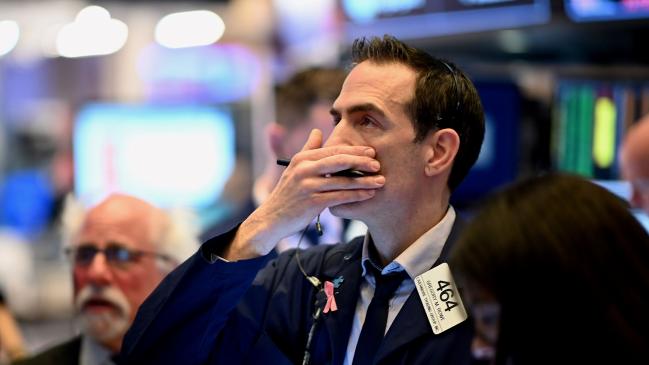
This article is more than
5 year oldCoronavirus: Global economic recession ‘guaranteed’, unemployment to rise

The coronavirus will push the world into a recession this year, with unemployment tipped to rise sharply as a result.
That’s the grim prediction from ratings agency S&P Global, which has warned the escalation of the coronavirus pandemic and a drop in growth alongside “volatile markets” and “growing credit stress” means a global recession is now unavoidable.
In a research report released yesterday, the firm claimed 2020 gross domestic product would rise just 1 to 1.5 per cent and that “the risks remain firmly on the downside”.
“The initial data from China suggests that its economy was hit far harder than projected, though a tentative stabilisation has begun,” the report states.
“Europe and the US are following a similar path, as increasing restrictions on person-to-person contacts presage a demand collapse that will take activity sharply lower in the second quarter before a recovery begins later in the year.
“Central banks have swung into action and are undertaking some combination of sharply reduced policy rates, resumed assets purchase and liquidity injections. Fiscal authorities have generally lagged but have begun to loosen the purse strings; we suspect that larger and more targeted spending to the most affected groups is forthcoming.”
And a second report published on the same day claims an Asia-Pacific recession was now “guaranteed” due to “an enormous first-quarter shock in China, shutdowns across the US and Europe, and local transmission”.
S&P’s definition of a recession is at least two quarters of “well below-trend growth” that’s enough to “trigger rising unemployment”.
“The rising scale of the shock will leave permanent scars on balance sheets and in labour markets, resulting in a more drawn-out, U-shaped recovery,” the organisation predicts.
It said shock, mass shutdowns and a drop in household and business confidence would “translate into severe and more persistent supply and demand shocks across the region”.
The problem will be amplified by a reduction in “people flows” in the travel, tourism and education sector as well as disruption to production and supply chains and a drop in demand for the region’s exports as well as commodity prices.
Unemployment is predicted to rise to 7 per cent this year, which would be the highest level in Australia since 1998.
RELATED: Investors brace for chaotic share market following record loss
“Australia is an example of an economy vulnerable to labour market shocks. While the headline unemployment rate is low, the underemployment rate — that is the proportion of workers that have a job but would like to work longer hours — has remained stubbornly high at over 8 per cent,” the report states.
“The underemployment problem is likely more acute in the accommodation and catering sectors, which account for over 7 per cent of total employment. Of these jobs, over 60 per cent are part time.
“While this give employers flexibility in reducing hours, the impact on workers can be brutally swift. In turn, this will hit consumer confidence and household income and spending.”
According to the latest data released by the Australian Bureau of Statistics on February 20, Australia’s trend unemployment rate remained steady at 5.2 per cent in January 2020, and has remained at that rate since September 2019.
And according to a Finder survey of experts and economists conducted this week, an alarming 87 per cent said a recession was now likely.
It’s a huge shift from the 89 per cent who did not expect a 2020 recession as recently as December, although two-thirds believe a recession would be over by the end of the year.
“COVID-19 pouncing unexpectedly on an already weakened Australian economy, has very much changed the game,” Finder insights manager Graham Cooke said.
Economists were also divided over whether the government’s $17 billion stimulus package would be sufficient, with over half saying more was needed.




